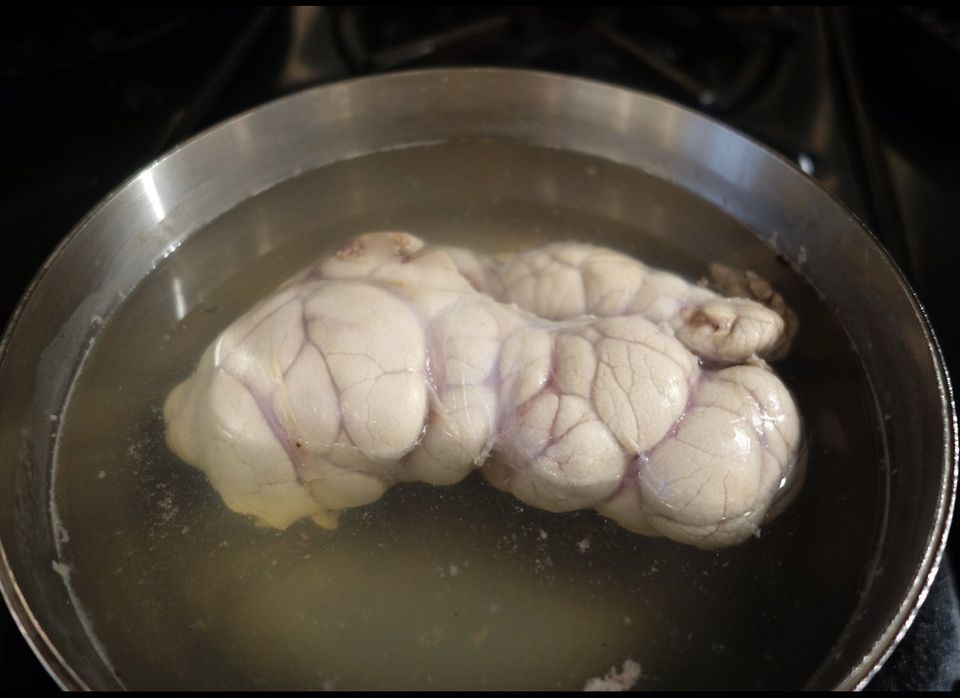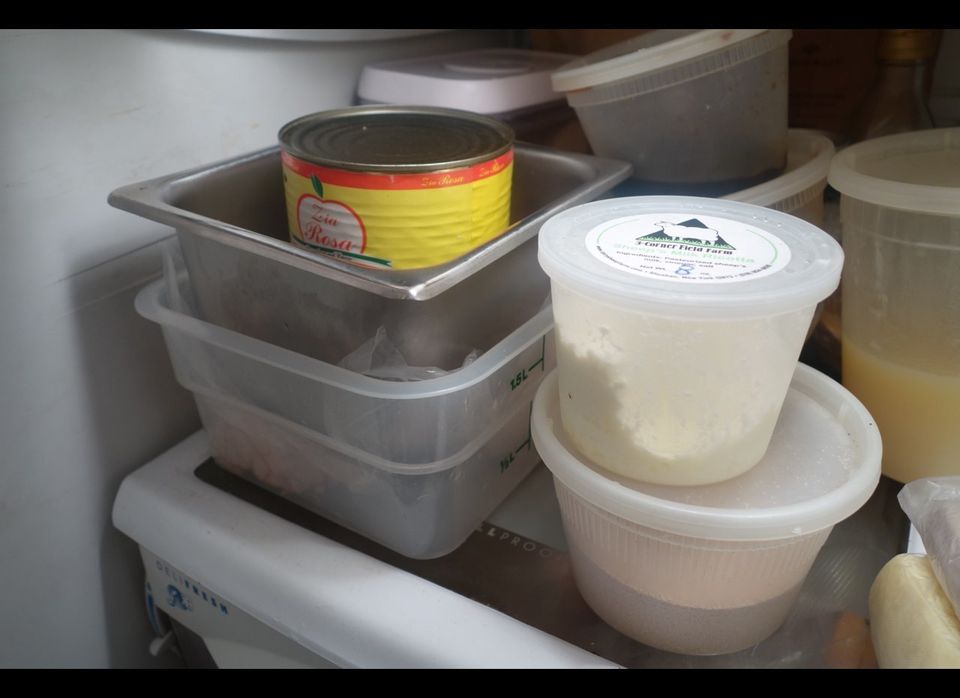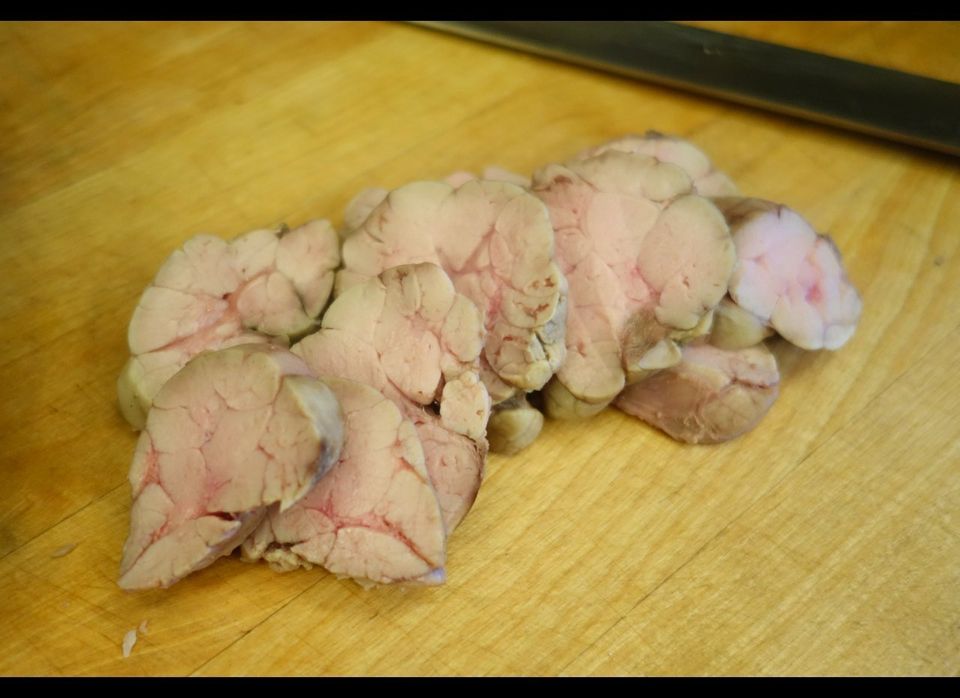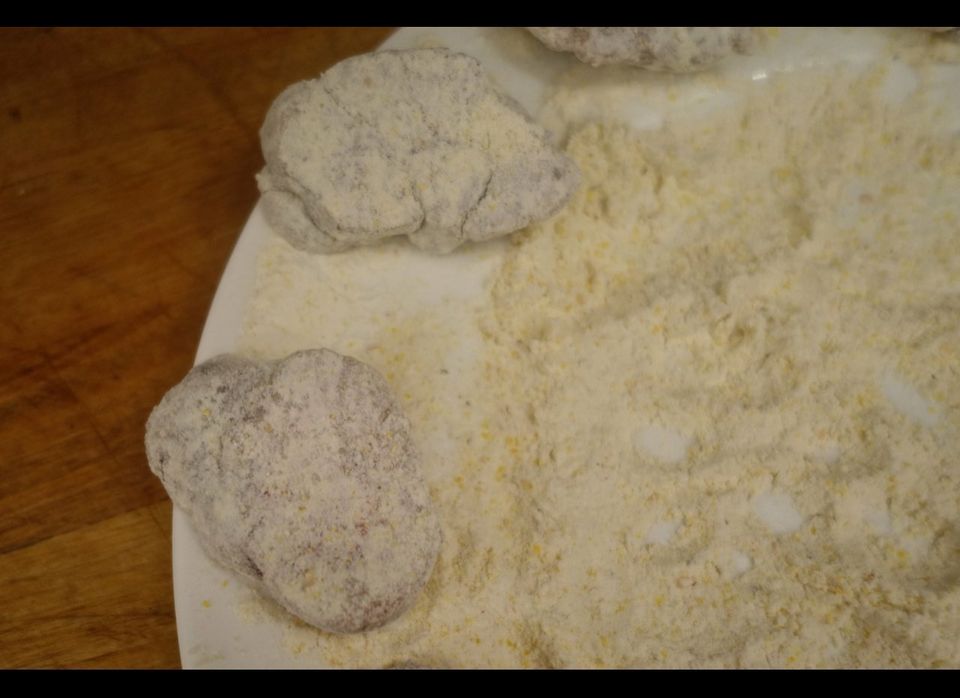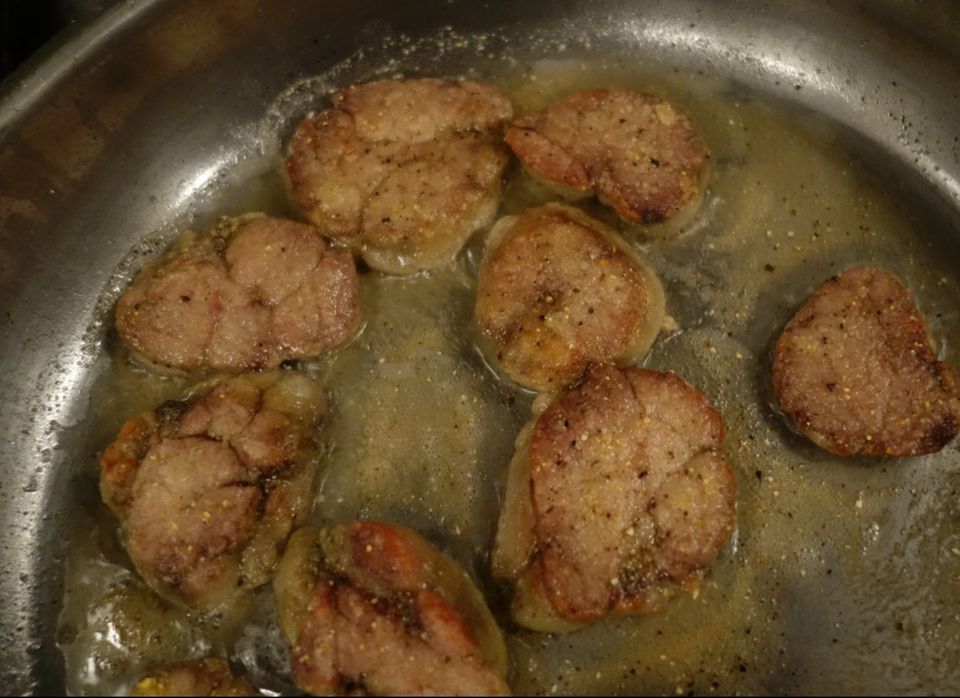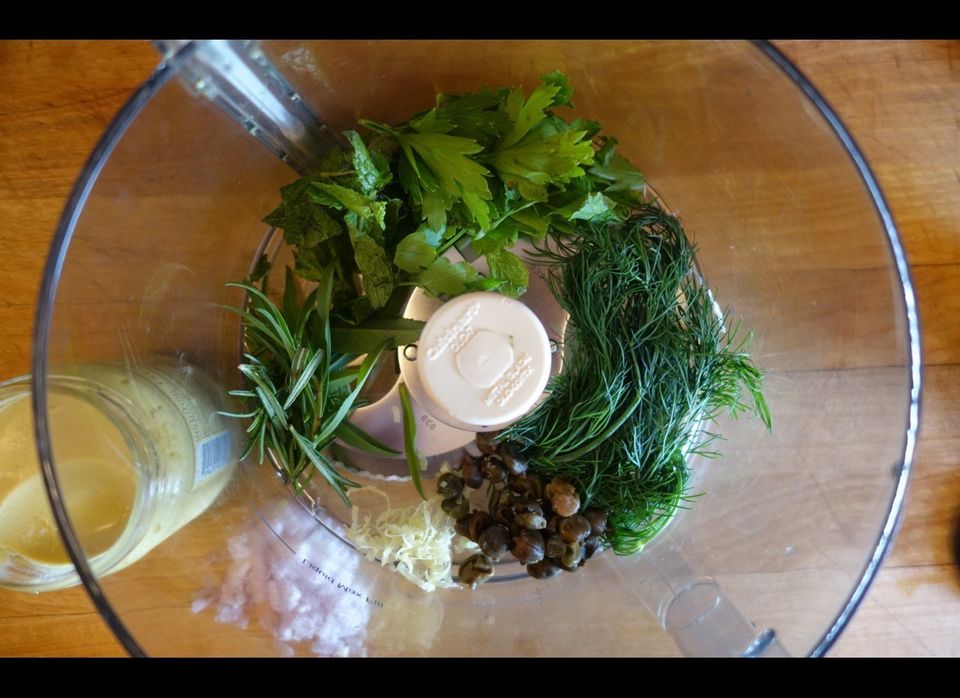A few months ago, the farmers' market producer from whom we get milk and other dairy products, as well as veal on occasion, reached into his cooler, pulled out a calf's sweetbread and suggested that I buy it. I did, and it went straight from his freezer into mine. Since then, it had been flickering at the far edge of my awareness, and Jackie had asked after its well-being several times. I finally defrosted it over the weekend, not quite sure whether we'd eat it ourselves or share it with a guest a couple of nights later.
Sweetbreads can be a hard sell: People who don't like liver and kidneys tend - wrongly - to include far milder-flavored sweetbreads on their list of aversions, while those who love those things often say they find sweetbreads lackluster and not worthy of their attention. So we decided to have it for dinner the other night, just the two of us. Sweetbreads (veal or occasionally lamb) find their way into many rich and fancy dishes from vol-au-vent financière to the great London chef Pierre Koffmann's more recent classic, stuffed pig's feet. Those fantastical dishes are lots of fun to eat, and they are challenging to cook - which can also be fun... in its way.
There are, however, plenty of less complicated ways to prepare them, as used by probably 99 per cent of sweetbread cooks worldwide: grilling and frying are the most common. And with those simpler methods, an equally simple no-cook sauce/dressing will add brightness - and not just to sweetbreads: The one I describe today can be used for all manner of foods, and, whether or not you decide to have a sweetbread dinner, you should make a bowl of the sauce.
I like to fry sweetbreads in a plain flour (and, in this case, cornmeal) coating: they get crisp, which is always a plus, and the simple crust doesn't get in the way of the pleasant but meek flavor of the meat. But first, they need to be prepared for cooking. When raw and whole, your sweetbread will be soft and floppy in a sort of octopus-like way. It will also be adorned with bits of fat and connective tissue. You need to get rid of some of this, and also to firm the sweetbread so it can be sliced or broken into convenient pieces. I use a simplified version of the process used in European-influenced kitchens, which I think yields good flavor and texture.
For the first-timer, preparation can be daunting, mainly because the sweetbread itself is so unlike the kind of meat we usually handle. But if you aim not for perfection but just for a nice meal, it's not much of a challenge at all. First, refrigerate the whole sweetbread in lightly salted water overnight; you will find that this leaches out some pink juices. Next day, trim away any clumps of fat and pull/cut off the more egregiously tough tissue and membranes: You'll know them when you feel them. Do not strip away the fine membrane that covers the gland and its individual "nuggets": it will be easier to remove whatever needs to be removed after the next step.
Now, poach the whole sweetbread in barely simmering, well salted water for ten minutes, then turn off the heat and leave it in the hot water for another ten. This needs to be gentle: vigorous or too-lengthy boiling will toughen the meat. Now transfer it to a bowl of ice water to cool down quickly. When it is cool, pick off some of that external membrane and any other artifacts that look unappealing. Don't go overboard: For one thing, if some of the fine membrane remains, it will not interfere with eating; for another, if you get obsessive you will remove the only thing that holds the lobe together and will wind up with little marble-sized pieces (which in the worst case you could still flour and fry, and they'd be fine).
You could stop here and move on to the final cooking, but I recommend putting the whole trimmed sweetbread in a container, laying a piece of plastic wrap on top of it and pressing it under a weight (another container with a can of food in it, for example) in the refrigerator for a couple of hours or overnight. You will find that more of that (to my mind unappetizing) pinkish liquid has been squeezed out and that the sweetbread is now more compact and easier to slice.
So, when dinner time approaches, slice it: I break whole sweetbreads into three or four pieces, following the glands' natural seams. This means my slices are on the small side, but they're nice and neat. Cut on the bias to maximize surface area, and cut about 3/8 inch (1 cm) thick. The interior will be on the pink side, and it will be firm, not flaccid.
Season each slice, both sides, with salt and pepper - other seasonings too, if you like, but keep it simple: paprika would be good. Dredge the slices in a mixture of 2/3 flour and 1/3 corn meal (or use all flour), then over medium-high heat shallow-fry them in neutral oil (such as canola/rape seed) or, better, in clarified butter if you have any. Drain and serve.
* * *
You could eat the crisp sweetbreads with a spritz of lemon juice, like schnitzels, but I like this variation on Italian salsa verde. I start with my usual salsa verde ingredients: capers, mustard, a minced shallot (rinsed in a sieve if you think of it) and lots of herbs including plenty of parsley, along with a selection perhaps including mint, tarragon and thyme or rosemary. And I always add dill, which isn't typical but which complements the capers and gives the sauce a surprising but not incongruous dimension. Lemon zest is a nice addition too, and a couple of oil-packed anchovies are traditional, though I didn't use them this time. Start it all whirring in the food processor (don't use a blender, or use it carefully, because you don't want a fine purée), then depart from the salsa verde script and add some tomato. For my quantity (see the photos), I used about 2/3 of a medium tomato. When this has been mashed up in the food processor, add quite a bit of delicious olive oil and not so much delicious wine vinegar: start with a tablespoonful of vinegar, and add more later if you need to. You'll need to add salt and pepper before adjusting the vinegar and very likely adding more oil. The consistency should be sludgy and the flavor should be harmonious but tart; you should be able to taste each ingredient if you think about it. Even though it isn't really red, the sauce is best called salsa rossa because of the tomato.
The sauce could hardly have been better with the sweetbreads and the boiled potatoes with which we ate them, but the leftovers will find their way onto other plates. It is great with just about any kind of fish, for instance, and with corned beef or other boiled meats, whether eaten on a sandwich or with knife and fork.
